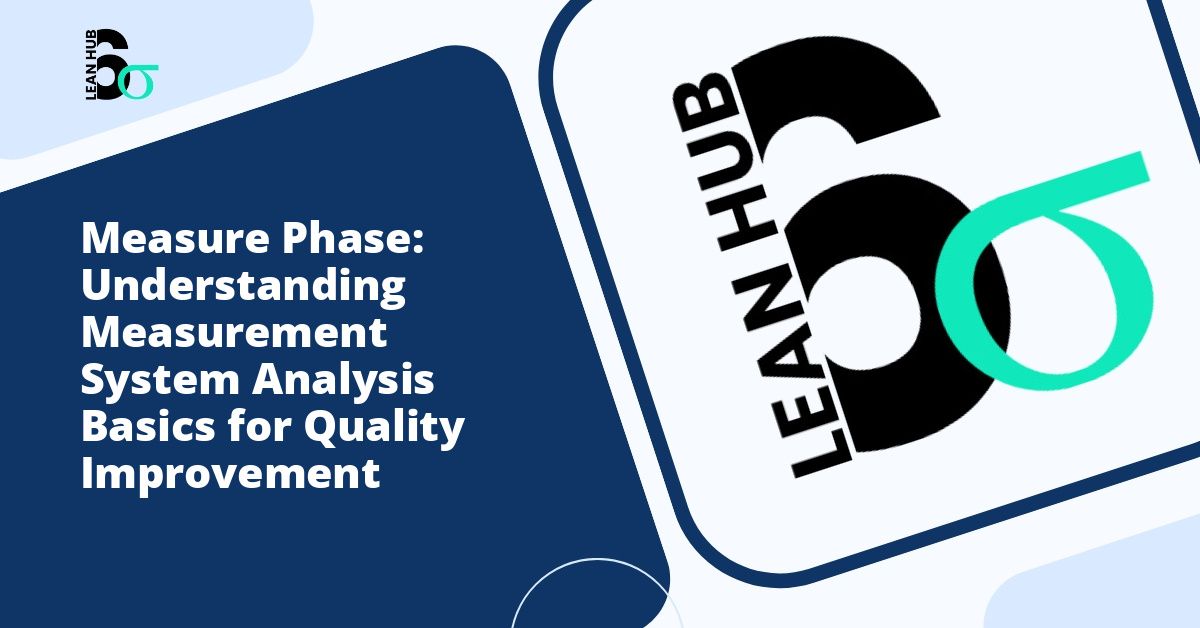In the world of continuous improvement and quality management, understanding your current processes is the foundation for meaningful change. Process mapping during the Measure Phase serves as a critical tool for organizations seeking to enhance efficiency, reduce waste, and improve overall performance. This comprehensive guide explores how to effectively document current state processes and leverage this information for operational excellence.
Understanding Process Mapping in the Context of Lean Six Sigma
Process mapping is a visual representation technique that illustrates how work flows through an organization. Within the lean six sigma methodology, it serves as an essential component of the Measure Phase, which is the second phase of the DMAIC (Define, Measure, Analyze, Improve, Control) framework. During this phase, teams focus on quantifying the problem, establishing baseline metrics, and documenting how processes currently operate. You might also enjoy reading about Gage R&R Study Explained: Understanding Repeatability and Reproducibility in Quality Management.
The primary objective of process mapping in the Measure Phase is to create an accurate, detailed representation of the current state. This documentation becomes the reference point against which all improvements will be measured. Without a clear understanding of how things work today, organizations cannot effectively identify opportunities for improvement or measure the impact of changes they implement. You might also enjoy reading about How to Calculate Process Sigma Level: DPMO and Sigma Conversion Guide for Quality Excellence.
The Importance of Documenting Current State Processes
Many organizations operate with informal, undocumented processes that exist primarily in the minds of experienced employees. This creates several challenges, including knowledge loss when employees leave, inconsistent execution, and difficulty identifying improvement opportunities. Current state process mapping addresses these issues by creating a shared understanding of how work actually gets done. You might also enjoy reading about What is Measurement Systems Analysis and Why It Matters in Six Sigma.
Documenting current state processes offers numerous benefits. First, it reveals the reality of operations rather than idealized versions that may exist in procedure manuals. Second, it exposes hidden waste, redundancies, and bottlenecks that impact efficiency. Third, it provides a common language for discussing processes across different departments and stakeholder groups. Finally, it establishes the baseline data necessary for measuring improvement efforts.
Key Elements of Effective Process Maps
A comprehensive current state process map should include several critical elements. The starting point clearly defines where the process begins, typically triggered by a customer request or business event. Process steps document each activity in sequence, showing what happens at each stage of the workflow. Decision points indicate where choices are made that affect the process flow. Inputs and outputs identify what goes into each step and what comes out.
Additionally, effective process maps include information about who performs each step, capturing roles and responsibilities. They document handoffs between individuals, departments, or systems, as these transitions often introduce delays and errors. Time data shows how long each step takes, helping identify bottlenecks and cycle time issues. Finally, quality metrics or defect opportunities highlight where problems typically occur.
Tools and Techniques for Process Mapping
Several process mapping tools are commonly used during the Measure Phase, each suited to different purposes. The flowchart is the most basic and widely recognized format, using standard symbols to represent different types of activities, decisions, and process flows. Flowcharts work well for relatively simple processes and provide an easy entry point for teams new to process mapping.
The swimlane diagram, also called a cross-functional flowchart, adds horizontal or vertical bands that represent different departments, roles, or systems. This format excels at showing handoffs and responsibilities, making it particularly valuable for processes that cross organizational boundaries. Value stream maps take a broader view, documenting the flow of materials and information required to deliver a product or service to customers. These maps specifically identify value-added and non-value-added activities, aligning closely with lean six sigma principles.
SIPOC diagrams (Suppliers, Inputs, Process, Outputs, Customers) provide a high-level overview of processes, useful for establishing context before diving into detailed mapping. For highly complex processes, detailed process maps may include multiple levels, starting with a high-level overview and drilling down into sub-processes as needed.
The Process Mapping Journey During the Recognize Phase
Before formal measurement begins, organizations often move through what some practitioners call the recognize phase, where they identify that a problem exists and acknowledge the need for improvement. During this recognition period, preliminary process observation helps teams understand the scope of the challenge. This early awareness sets the stage for more rigorous documentation during the Measure Phase.
The recognize phase involves gathering anecdotal evidence, reviewing customer complaints, examining quality data, and listening to employee concerns. These activities help prioritize which processes require detailed mapping and improvement efforts. Once a process is selected for improvement, the team transitions into formal measurement activities, with current state process mapping as a primary deliverable.
Best Practices for Documenting Current State Processes
Successful process mapping requires careful planning and execution. Begin by assembling a cross-functional team that includes people who actually perform the work, not just managers who oversee it. Frontline employees provide the most accurate information about how processes really function versus how they are supposed to function.
Walk the process in person whenever possible. Rather than mapping processes in a conference room based on memory or assumptions, observe the work as it happens. This gemba walk, a concept from lean six sigma, reveals details that people might forget to mention and uncovers workarounds or informal steps that have become standard practice.
Document the process as it currently exists, not as you wish it would be. The temptation to clean up or idealize the process during mapping is strong, but it defeats the purpose of establishing an accurate baseline. Save improvement ideas for later phases, but capture them in a parking lot so they are not lost.
Validate the process map with multiple stakeholders. After creating an initial draft, review it with various people who interact with the process to ensure accuracy and completeness. Different perspectives often reveal steps or variations that the initial mapping session missed.
Include relevant data on the process map. Cycle times, wait times, defect rates, and other metrics transform a simple flowchart into a powerful analytical tool. This data becomes essential during the Analyze Phase when the team works to identify root causes of problems.
Common Challenges and How to Overcome Them
Process mapping initiatives face several predictable obstacles. Process variation presents a significant challenge, as work may flow differently depending on product type, customer requirements, or other factors. Address this by mapping the most common scenario first, then documenting significant variations separately.
Resistance from team members who fear that documentation will lead to criticism or job elimination can derail mapping efforts. Combat this by emphasizing that the goal is process improvement, not people improvement. Create a blame-free environment where honest discussion about current state challenges is encouraged.
Scope creep can turn a focused mapping exercise into an overwhelming project. Set clear boundaries about which processes or sub-processes will be included and stick to those limits. You can always expand the scope later if needed.
Insufficient detail makes the map less useful for analysis, while excessive detail makes it difficult to understand and use. Strike the right balance by asking whether each piece of information will help identify improvement opportunities or measure results.
Leveraging Current State Maps for Improvement
Once completed, current state process maps become powerful tools for driving improvement. They serve as visual aids for discussing problems and opportunities with stakeholders at all levels. The maps help teams identify specific types of waste recognized in lean six sigma, including waiting, transportation, overprocessing, and defects.
These documented processes also provide the foundation for future state mapping, where teams design improved processes. The comparison between current state and future state maps clearly communicates the nature and impact of proposed changes. Additionally, current state documentation establishes the baseline metrics against which improvement results will be measured, enabling teams to demonstrate the value of their lean six sigma projects.
Conclusion
Process mapping during the Measure Phase is an indispensable activity for organizations committed to operational excellence through lean six sigma methodologies. By accurately documenting current state processes, teams create the foundation for data-driven improvement initiatives. This investment in understanding how work currently flows pays dividends throughout the improvement journey, from identifying opportunities during the recognize phase through measuring results after implementation. Organizations that master the art and science of process mapping position themselves to achieve sustainable improvements that deliver real value to customers and stakeholders.








